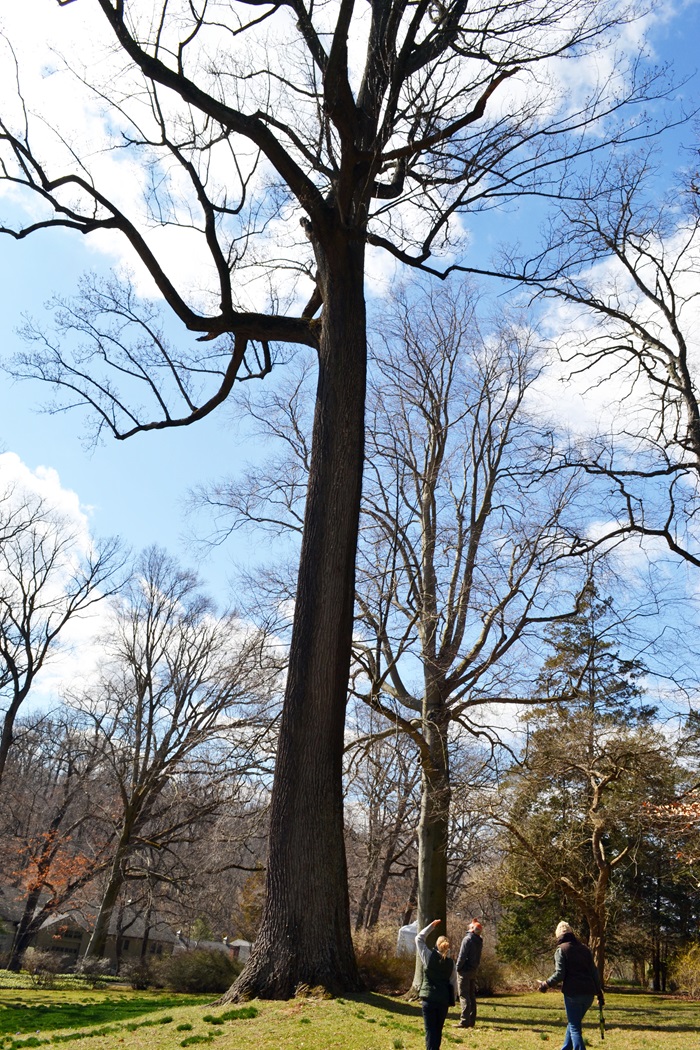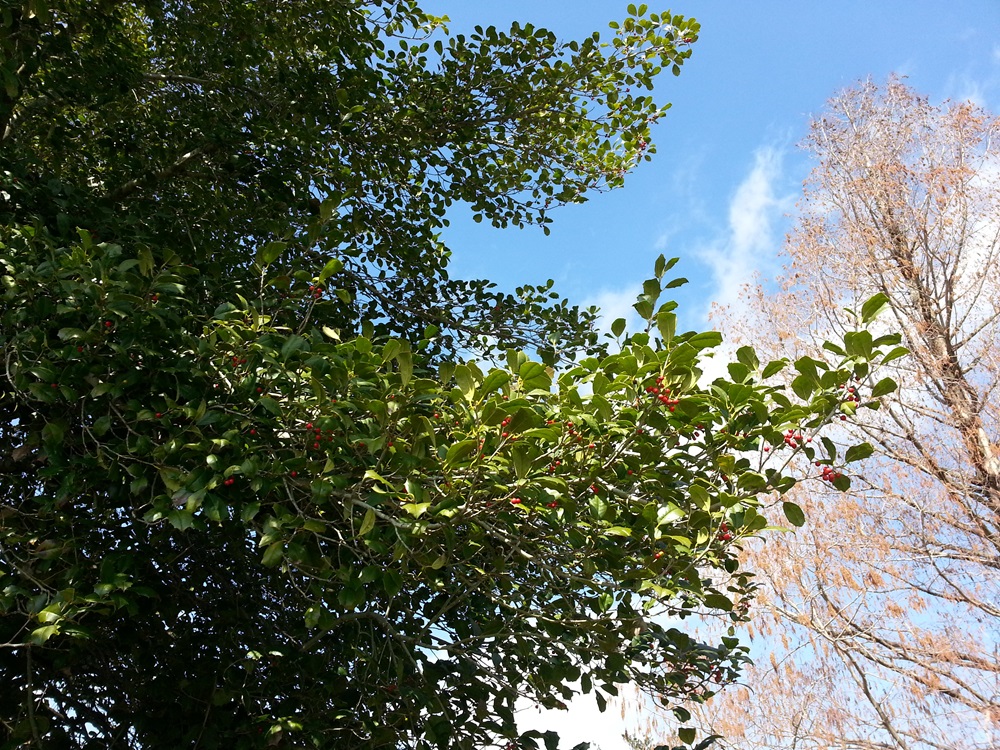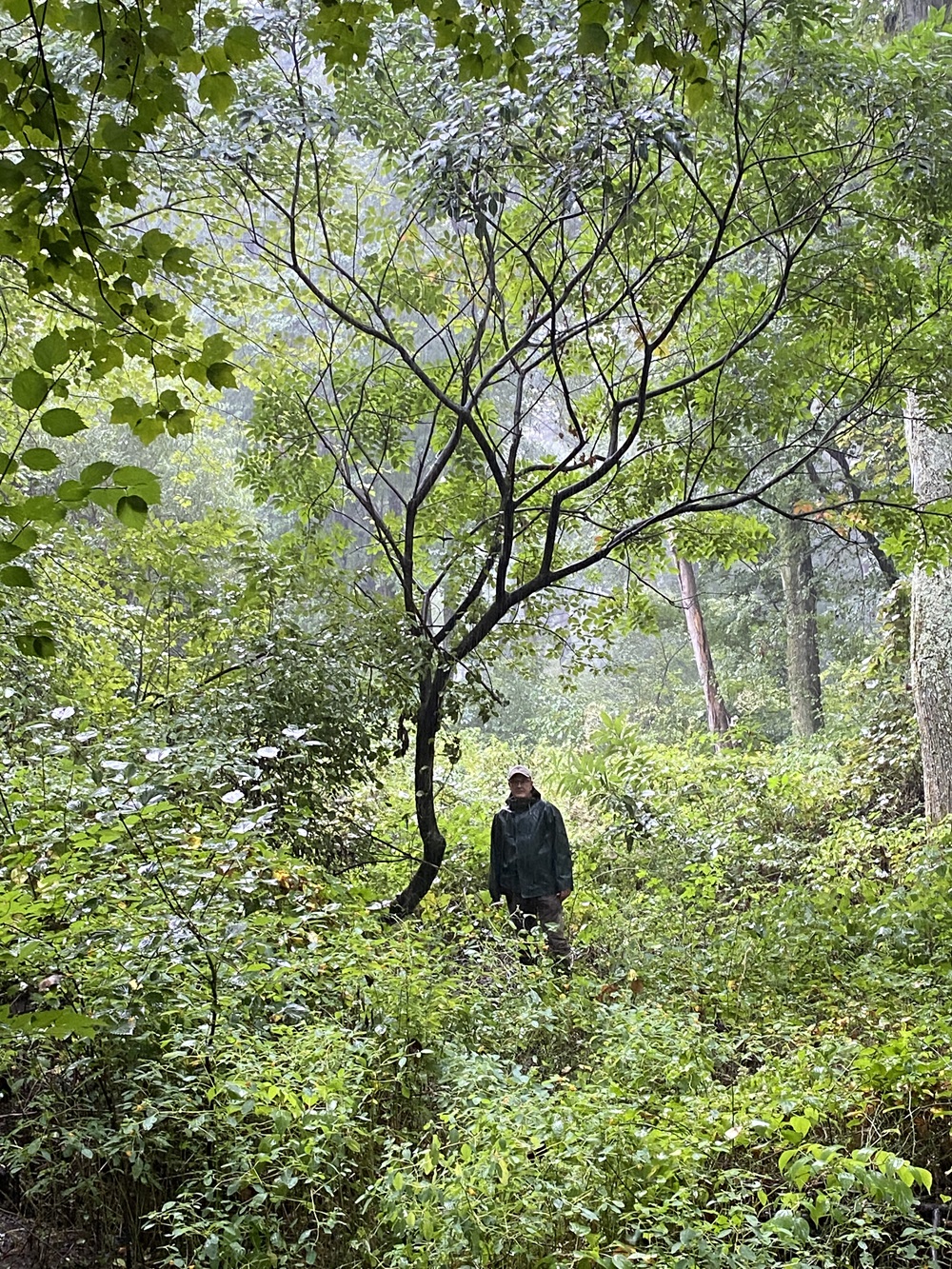Outdoor Delaware is the award-winning online magazine of the Delaware Department of Natural Resources and Environmental Control. Articles and multimedia content are produced by the DNREC Office of Communications.
What stands higher: the world’s tallest tree or Delaware’s tallest building? Take a moment to think about it and make your guess.
As it turns out, you might be surprised at the result.

The tallest known tree is a whopping 380 feet. Located in northern California, the tree, a coast redwood christened Hyperion, is taller than a football field is long. In fact, the tree, which is estimated to be around 700 years old, would loom over the tallest building in Delaware.
That building, a high-rise at 1201 North Market Street in Wilmington, stands 360 feet from the ground, meaning even the mightiest man-made structure in the First State cannot compete with Mother Nature’s prime specimen.
But what about the tallest tree in Delaware? How does that compare?
Well, that honor belongs to a yellow poplar in northern Delaware’s chateau country. Located at Winterthur estate, the tree stands 173 feet tall.
If Hyperion were equal in height to Robert Wadlow, who at 8’11 was the tallest verified person in human history, the yellow poplar would be a mere 4’1.
One more comparison: It would only take three of Winterthur’s yellow poplars stacked on top of each other to surpass the tallest point in the state, Ebright Azimuth, which stands 448 feet above sea level just a stone’s throw from the Pennsylvania state line.
Despite its height, said tree is actually not the largest tree here. Rather, Delaware’s largest tree is a 94-foot zelkova on private property just a few miles away from the record-breaking yellow poplar.
Though everyone can understand what is meant by the phrase “tallest tree,” understanding what goes into defining the largest tree is not as simple.
Tree experts generally use three criteria to determine a tree’s size:
Each measurement is assigned a value (1 inch equals one point for circumference, 1 foot equals one point for height and 4 feet equal one point for crown spread), and viola, a total is determined.
The zelkova clocks in at more than 27 feet in circumference and has 448 total points, just slightly topping the yellow poplar’s 438. If you’re confused, consider this: the yellow poplar, despite being 84% taller than the zelkova, has a circumference about 35% less and an average crown spread 15% smaller.
The yellow poplar does have clear one advantage over the zelkova, as it were: Unlike its taller counterpart, the yellow poplar is native to Delaware. In fact, the Delaware Department of Natural Resources and Environmental Control’s logo uses three yellow poplars to represent the state’s three counties.
In all, the First State is home to 140 different tree species, of which 80 are native, according to DNREC botanist Bill McAvoy. Of those 60 non-native species, 25 are characterized as invasive, meaning they are harmful to the local ecosystem.
The most common family is the beech family with 22 species and varieties, followed by the rose family with 18. The largest genus is the oaks, which boast 16 species and varieties.
Owing to its small size and fairly uniform climate and physiography, Delaware has less diversity in its tree species than most states.
Areas with different kinds of soil, both wet and dry, tend to have more types of trees. These include both Killens Pond and Brandywine Creek state parks. Broadly speaking, tree diversity is more prevalent in areas with more habitat diversity.
Among the most common species are red maple and sweetgum, both of which McAvoy termed “early successional species” for their ability to sprout in either moist or dry soil soon after an area is cleared of plants.
Some of our tree species are thriving, while others are considerably rarer. The Eastern hemlock, for instance, is on the verge of becoming extinct here. Despite its preference for mountainous terrain, the eastern hemlocks in northwestern Delaware’s Piedmont province seem to have vanished, with only a few disjunct populations of the tree present closer to the coast.
American elms and American chestnuts have both suffered from disease, with the former being devastated by Dutch elm disease in the 20th century. Urban and rural communities throughout Delaware that had planted American elms saw big die-offs as the fungus spread.
Chestnuts, meanwhile, were hit hard by chestnut blight all throughout the United States. The blight stems from a fungus native to Asia, and while trees inflicted with it can still grow, they’re basically limited to stump sprouts.
The four species of ash tree found here have also been seriously impacted in the span of less than a decade. The emerald ash borer, a beetle originally from Asia, was first detected in Delaware in 2016, making it the 28th state with a confirmed presence. The beetle’s larvae feed on bark, killing a tree within a few years of an infestation.

The beetle’s effects are such that the Delaware Department of Agriculture urges Delawareans to avoid planting ash trees. Those who already have these trees on their property can consult a certified arborist for a health inspection. Individuals who think they have seen an emerald ash borer should contact the Department of Agriculture at 302-698-4500 and ask for the Plant Industries Section or the Delaware Forest Service.
About 2% of Delaware’s forest cover consists of ash trees.
Other tree species of note in Delaware, according to McAvoy, include bald cypress and Atlantic white cedar. Bald cypress trees, which are particularly prominent at Trap Pond State Park, are notable because Delaware represents the northern limit of their range.
The trees are more reminiscent of something out of the Louisiana Bayou than what you expect to find in Delaware, said DNREC Division of Parks and Recreation Director Ray Bivens, who started his career as a park naturalist.
“Every time that I have someone from out of state come, they’re just blown away that that does not feel like Delaware to them,” he said.
McAvoy noted rare plants and insects can frequently be found by Atlantic white cedars.
“The actual tree itself is not rare but the community or swamp that they create is rare,” he said.
What is today the Eastern United States was once home to an unbroken chain of forest stretching from Canada to Florida. Today, only small remnants survive, a legacy of colonialism and the rapid expansion of European settlers across North America.
Still, (relatively) old-growth forests can be found in each county, according to the Old-Growth Forest Network, a conservation-focused nonprofit. In fact, McAvoy noted, Delaware is the only state with such a distinction (which is doubtless made much easier by the fact we have a meager three counties). These forests include Barnes Wood Nature Preserve near Seaford, the Anne M. McClements Woodland Tract of the Fork Branch Nature Preserve in Dover, Winterthur and Tulip Tree Woods Nature Preserve at Brandywine Creek State Park.
Tulip Tree Woods Nature Preserve, in particular, has been left largely untouched for a long time, with many trees more than 200 years old, according to the Old-Growth Forest Network.
“I think anyone that goes in there also gets this feeling like, I didn’t know Delaware had trees this big,” Bivens said.

To him, some tree species, such as the American holly, “have a connection to our land and our history.” The American holly has been very popular at times and, in 1939, became the official state tree in recognition of the fact Delaware exported more holly wreaths than any other state at the time.
People may also have individual connections to different types of trees based on their own experiences, Bivens said, noting he has fond childhood memories of making tea from sassafras roots with his grandmother.
The Delaware Department of Agriculture’s Forest Service and McAvoy maintain separate lists of the tallest trees of various species in the state, while the nonprofit American Forests began keeping a similar national list in 1940 before handing it over to the University of Tennessee this year. Beginning in January, members of the public around the nation will be able to submit nominations for these “Champion Trees” to the university, which will eventually produce an updated publication listing the largest trees of various species.
Delaware is one of the few states not included in the most recent version of the registry. However, a poison sumac McAvoy found at Wiggins Mill Park in Townsend in 2022 measured out at 51 points, seven more than the current national champion located in Virginia. The botanist is hopeful the next edition of the national registry will include this tree.
The Delaware Forest Service’s guide contains all sorts of interesting information on almost 80 different species here. If anyone is interested in driving around the state to check out large trees of various species, this is your go-to. It informs readers the tallest American holly known to exist in Delaware, for instance, stands 60 feet high and can be found in Delaware City.
While that list mostly consists of trees with relatively little competition — think a lone oak in someone’s yard that doesn’t have to battle with other saplings for essential nutrients like sunlight — McAvoy keeps track of the biggest wild trees. The American holly with the biggest circumference (again, the Delaware City tree) checks in at just over 10 feet, whereas the largest tree of that species McAvoy has found in Delaware’s natural habitats (in this case, somewhere in Sussex County) has a circumference of 6 feet.
The oldest tree is unfortunately not included in either of these Delaware lists, but our state is believed to be home to at least a few trees that were alive during the days of Pennsylvania proprietor William Penn, who died in 1718, including a yellow poplar at Winterthur. (In case you’re curious, the world’s oldest known living tree is a Great Basin bristlecone pine in California named Methuselah, at around 5,000 years of age.)
Delaware’s lumber industry has tailed off over the past few decades, Bivens said, meaning some areas once used for commercial forestry have now been left alone, enabling the trees to grow freely.

However, the Delaware Forest Service believes many of the early successional forest types now on the land in Delaware, such as pines, tulip poplar, oak and hickory were initiated by agricultural land clearing and timber harvesting practices in the 19th and early 20th centuries. The service currently works closely with the forest industry and landowners to encourage sound scientific harvesting practices, which may include opening woodlands to allow the regeneration of tree seedlings that need full sunlight.
“We should not lose sight of how valuable trees are. Around a third of Delaware is forest,” said Bill Seybold, the Delaware Forest Service’s forest health specialist who oversee the large trees program. “Trees take in carbon dioxide and produce oxygen we need to survive, but that’s just a start. They provide valuable habitats for wildlife, help prevent soil erosion, filter water and offer shade.”
“It’s a whole chain of biodiversity there,” McAvoy said.
Under Gov. John Carney, Delaware has made efforts to encourage large-scale tree plantings. The Tree for Every Delawarean initiative, in partnership with non-governmental organizations like the Delaware Center for Horticulture, Delaware Center for the Inland Bays, Delaware National Estuarine Research Reserve, Delaware Wild Lands and Delaware Nature Society, emphasizes the role trees play in nature, in particular in helping mitigate climate change.
For more information on the program, including opportunities to receive funding for plantings, or on tree care in general, visit dnrec.delaware.gov/tedi.
The next time you’re out in nature, take a moment to look at, and more importantly, appreciate, the tree species around you. Life quite literally would not exist without them.
Related Topics: agriculture, forest, measurement, native plants, native species, nature, outdoor delaware, tedi, tree planting, trees